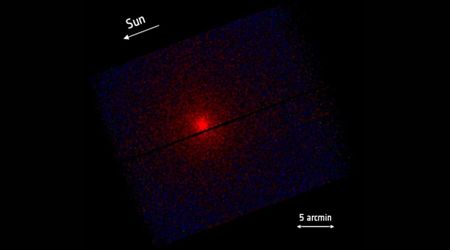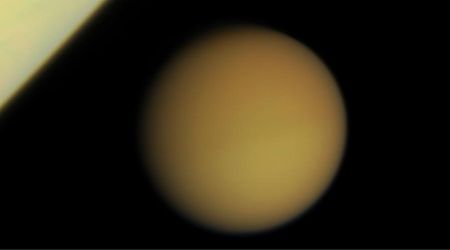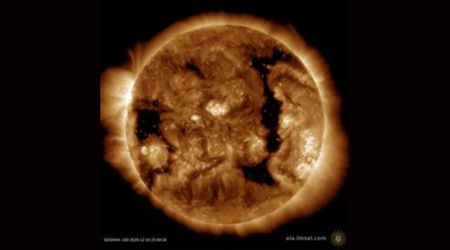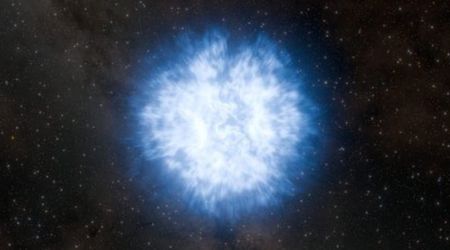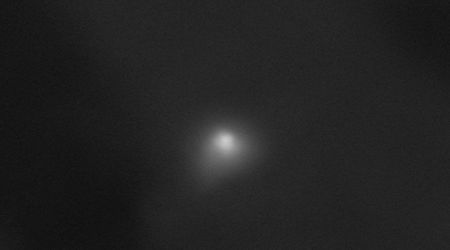The Spacecraft Cemetery


"Spacecraft Cemetery" might evoke images of a zany, spine-chilling film that you'd unquestionably steer clear of at the movie theater. However, it's genuinely a real location.
This seemingly otherworldly domain exists not in the depths of space, but right here on our very own planet. Picture a remote, watery graveyard where the relics of the space race and mankind's efforts in space exploration meet their final resting place, far from any civilization.
The Spacecraft Cemetery, an enigmatic corner of the South Pacific Ocean, harbors the remnants of decommissioned satellites, space stations, and other celestial artifacts.
In the below article, we will delve into the story of this secluded site, where past technological wonders now turned space junk find solace beneath the waves and discover the objects that have been laid to rest at Earth's most isolated underwater tomb.
Meet the spacecraft cemetery
The "spacecraft cemetery," also known as the "oceanic pole of inaccessibility" or "Point Nemo," is a remote location in the South Pacific Ocean where decommissioned satellites, space stations, and other space debris are intentionally deorbited and allowed to crash into.
"Point Nemo," is a name derived from the Latin word "Nemo," which translates to "no one." This moniker also shares a connection with the iconic character Captain Nemo from Jules Verne's renowned science-fiction adventure novels, Twenty Thousand Leagues Under the Seas (1870) and The Mysterious Island (1875).
The area is located about 2,415 km (1,500 miles) from any land, making it the farthest point from any landmass on Earth. The ocean depth in this region is around 4,000 meters (13,000 feet). Its coordinates are approximately 48°52.6?S 123°23.6?W.
The spacecraft cemetery has been used as a controlled re-entry point for defunct spacecraft and space debris and this extremely remote location was chosen to minimize the risk of causing harm to humans or the environment.
As spacecraft re-enter Earth's atmosphere, they typically burn up due to the heat generated by the friction between the spacecraft and the atmosphere. Any remaining debris falls into the ocean, where it sinks to the bottom, minimizing the impact on human life or property.

How did the idea of a spacecraft cemetery come about?
The concept of a spacecraft cemetery emerged in response to the growing concerns surrounding space debris and the need for a safe, controlled method of disposing of decommissioned spacecraft.
In the 1970s, space agencies recognized the potential hazards posed by uncontrolled re-entries of defunct spacecraft, which could endanger human lives, property, and the environment.
Space agencies coordinate and communicate with each other through international organizations like the United Nations Office for Outer Space Affairs (UNOOSA) and the Inter-Agency Space Debris Coordination Committee (IADC). These organizations help establish guidelines and coordinate efforts for the safe disposal of space debris.
To address these growing concerns, the idea of designating a remote location on Earth for controlled deorbiting and disposal of space debris was proposed.
As more spacefaring nations and organizations recognized the benefits of this approach, the concept of a spacecraft cemetery gained widespread acceptance and has since become the standard practice for disposing of large, high-risk space objects. To this date, NASA, ROCOSMOS and the CNSA have all used this remote location to retire their biggest space debris.
Why was Nemo chosen to become a spacecraft cemetery?
By choosing a location far from human settlements and major shipping routes, such as Point Nemo in the South Pacific Ocean, the risk of causing harm during re-entry is significantly minimized.
- Remote location: Point Nemo is the farthest point from any land on Earth
- Minimal shipping activity: the risk of space debris interfering with maritime traffic is drastically reduced.
- Great depth: With a depth of around 4 kilometers (13,000 feet), the ocean at Point Nemo is deep enough to further minimize any risks.
- Low biodiversity: It is believed that the oceanic wildlife in the area surrounding Point Nemo is relatively low in comparison to other parts of the world.
- Predictable ocean currents: The South Pacific Gyre, the ocean current system surrounding Point Nemo, is relatively stable and predictable, reducing the chances of debris being transported to other areas.
- Lower likelihood of recovery: The remoteness and depth of Point Nemo make it difficult and costly to attempt unauthorized recovery of the spacecraft debris.
- It's a neutral location: Point Nemo is situated in international waters, far from any nation's territorial claims. This means that no country has jurisdiction over the area, making it an ideal location for collaborative efforts and shared responsibilities.

Why do we need the spacecraft cemetery?
Whilst most spacecraft will end up burning up during their atmospheric re-entry, some parts of a very large spacecraft may survive this scorching furnace and make their way to the surface. We simply can not take the risk for those large pieces of metal to reach land. Their weight combined with the speed at which they fall means they would cause a violent collision to the surface, damaging and possibly hurting the surrounding communities.
A prime example is the skylab incident: On July 11, 1979, Skylab re-entered Earth's atmosphere and broke apart, with debris scattered across the Indian Ocean and a sparsely populated region of Western Australia. Fortunately, no injuries or significant damage were reported. The Skylab incident highlighted the need for better planning and control of space debris re-entry.
According to the European Space Agency, about one satellite reaches the end of its mission and falls back down to Earth per week. This must not feel like a lot but the past few years have seen the increasing rates at which more satellites are being sent to space by commercial companies such as Space X. The Chinese National Space Agency now has a space station in action in LEO (Low-Earth Orbit) too.
Moreover, the International Space Station is scheduled for retirement in 2031, following several mission extensions. In order to prevent an event like the Skylab incident, the ISS will be guided to the spacecraft cemetery for disposal once it is decommissioned.
How much space junk is there at the bottom of the ocean now?
The precise number of space debris in the spacecraft cemetery at Point Nemo is difficult to determine. I was not able to find any record and I don’t think the exact number is being accurately tracked by space agencies.
Over the years, rough estimates of around 260 spacecraft have been intentionally deorbited and directed to re-enter Earth's atmosphere over Point Nemo. That being said, not all space debris sent to the spacecraft cemetery will reach the ocean floor, as some of it disintegrates in the atmosphere and never splashes down into the ocean.
As a result, it's challenging to provide an exact number of space debris pieces currently residing in the spacecraft cemetery, but some of the most famous spacecraft currently there include:
- The Mir Space Station: A Soviet (later Russian) space station that operated from 1986 to 2001, Mir was once the largest artificial satellite in Earth's orbit.
- Progress cargo spacecraft: Various decommissioned Russian Progress cargo spacecraft has been used to resupply the International Space Station and the Mir Space Station.
- Automated Transfer Vehicles (ATV): The European Space Agency's (ESA) series of resupply spacecraft, which were used to deliver supplies to the International Space Station from 2008 to 2014.
The International space station is scheduled to crash into the spacecraft cemetery when it is officially retired.

Is it ethical to send our space junk into the Ocean?
The simple answer to that question is no, it's not ethical to leave our trash in the Ocean. However, the caveat is that we just do not have any better solutions than this one at this moment in time.
A research paper published in 2009 with 12 scientist contributors indicates that the South Pacific Gyre's ocean currents result in low biodiversity in the area. The seafloor is likely home to sea cucumbers, seabed octopuses, and a few fish, with generally low biomass due to limited nutrient-rich upwelling waters.
Some of the materials that make up spacecraft are indeed toxic, but the likeliness of these surviving the few hundred miles long, scorching hot re-entry phase is next to none. Space junks that survive the atmospheric re-entry phase and land in the ocean are primarily made of stainless steel, titanium, or aluminium, which are not toxic.
Marine life can adapt to the presence of metallic structures:
- It can become a place for colonisation.
- It can provide shelter.
- It can become an artificial reef, just like on sunken ships.

Are there better solutions on the horizon?
Design for Demise (D4D) has recently become a focal point in satellite manufacturing, as companies strive to adhere to new Space Debris Mitigation requirements. These regulations mandate that the risk of someone being hit by falling space debris must be less than 1 in 10,000.
This research is part of the European Space Agency's (ESA) Clean Space Initiative, which focuses on developing technologies and strategies to reduce the environmental impact of space activities.
To achieve this goal, satellite manufacturers, guided by the European Space Agency's (ESA) Clean Space Initiative, are exploring design alternatives that cause satellites to disintegrate during atmospheric re-entry.
Some of the design specifications they are currently researching include:
- Material selection: Using materials that have a lower melting point or are more susceptible to ablation can ensure that they burn up more easily during re-entry. Replacing materials like titanium, stainless steel, or aluminum with alternatives that have lower thermal resistance can be beneficial.
- Component placement: Relocating critical components to areas where they would experience more heating during re-entry can help facilitate disintegration. This could involve positioning them on the exterior of the spacecraft or closer to the heat-affected areas.
- Component geometry: Designing components with thinner walls or more streamlined shapes can make them more susceptible to heat and aerodynamic forces during re-entry, increasing the chances of disintegration.
- Controlled break-up: Incorporating mechanisms that trigger a controlled break-up of the spacecraft during re-entry can aid in the disintegration process. This could involve using explosive bolts or other devices that weaken structural elements at specific points.
- Demisable propellant tanks: Designing propellant tanks that can rupture and burn upon re-entry ensures that they do not survive the re-entry process.
Conclusion
Point Nemo represents a cooperative and environmentally conscious approach to addressing this critical issue, paving the way for further collaboration among space agencies and responsible stewardship of our planet's orbital environment.
When I first heard of this place, my first thought was “It can’t be responsible to chuck our space trash in the ocean, we’re already messing the planet enough as it is.”, I researched the subject in more depth, I have come to realise that the damage was not as bad as I thought and that the damage caused by not using remote locations such as point Nemo could be way worse.
We are slowly reaching a critical point in terms of space junk, there is too much of it already and we may face a phenomenon called the Kessler Syndrome. The Kessler Syndrome, proposed by NASA scientist Donald J. Kessler in 1978, describes a scenario where the density of space debris in low Earth orbit becomes so high that collisions between debris lead to a cascading effect, generating even more debris.
This chain reaction could result in a near-impenetrable barrier of debris, making space travel, satellite launches, and even maintaining the International Space Station extremely hazardous and challenging.
If you’d like to learn more information about the current space debris problem, check out our article: Orbital Debris: Exploring Innovative Solutions for Space Junk Removal
Frequently Asked Questions
Could I reach Point Nemo by boat?
It would be possible in theory but probably not something I would recommend. What would be the point? There is nothing there and the space debris would be a few miles deep in the ocean.
To explore this underwater graveyard, one would need a deep-sea submersible or remotely operated vehicle (ROV) capable of withstanding the immense pressure and harsh conditions at such depths.
Will there be any attempt at retrieving the space debris?
As of now, there have been no concrete plans or proposals to retrieve the space debris from Point Nemo. The primary reasons are the technical challenges, high costs, and potential risks involved in such an endeavor.
The space debris, now devoid of any financial or scientific worth, is situated thousands of feet beneath the ocean’s surface, rendering its retrieval and access quite challenging.
Where could a second spacecraft cemetery be established?
An additional remote location for a second spacecraft cemetery would need to fulfill the exact same criteria as the first one. However, Point Nemo encompasses a very large area, and the rate at which decommissioned spacecraft are deposited there remains relatively low. At this moment in time, there is just no need for a second spacecraft cemetery.
Explore more astronaut stories ???
This page is part of our collection of articles about astronauts. If you enjoyed the read, then you'll love the following articles.

How big is the International Space Station?
You may have seen the ISS as a tiny point of light in the night sky, but in reality, the infamous space station is much bigger than you may think.

Stellar Goodbyes: The Practice and Legality of Space Burials
Learn about space burials, their history, the people who've chosen them, and how they're changing the way we perceive funerary rites.

How Many People Are in Space Right Now?
Discover the names of the brave men and women currently living and working aboard the two space stations currently in orbit around the planet.

The re-entry: How do astronauts get back to earth?
Let’s go over the process of re-entry including the concerns and technological requirements of spacecraft along with the experiences of astronauts.


